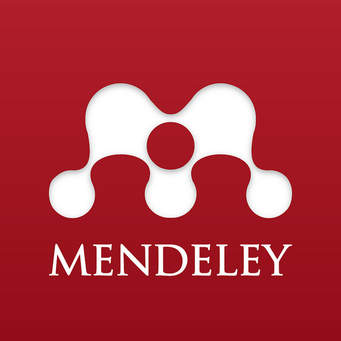FAKTOR RESIKO ANEMIA PADA REMAJA PUTRI OBESITAS DI BANDAR LAMPUNG TAHUN 2020
Abstract
Background : Anemia is a problem that often occurs among teenagers, especially young women. Several factors related to adolescent anemia are obesity, calorie intake, protein intake, iron intake, and vitamin C intake.
Purpose : The purpose of this study was to analyze risk factors for anemia in obese adolescent girls in Bandar Lampung in 2020.
Method : This study used a cross-sectional design. The sample in this study were 100 female students. Data analysis used the Chi-square test to determine the relationship between risk factors and anemia status of adolescent girls.
Results : The results of the study were 13% obese adolescent girls, 21% anemia status, 72% very less calorie intake, 49% very less protein intake, 95% very less Fe intake, and 90% very less vitamin C. Faktor yang berhubungan dengan anemia pada remaja putri obesitas yaitu asupan protein (p=0,004) dan lama menstruasi. Factors associated with anemia in obese adolescent girls were protein intake (p = 0.004) and menstrual duration (p = 0.019).
Conclusion : Protein intake and duration of menstruation have a significant relationship with the incidence of anemia, but there is no relationship between obesity, calorie intake, intake of Fe and Vitamin C with the incidence of anemia. Researchers suggest that respondents' knowledge is needed in choosing nutritious and balanced foods, nutrition education, especially regarding food selection, and the importance of choosing a nutritionally balanced diet.
Full Text:
PDFReferences
Afrianti, D., Garna, H. and Idjradinata, P. (2016) ‘Perbandingan Status Besi pada Remaja Perempuan Obes dengan Gizi Normal’, Sari Pediatri, 14(2), p. 97. doi: 10.14238/sp14.2.2012.97-103.
Aigner, E., Feldman, A. and Datz, C. (2014) ‘Obesity as an emerging risk factor for iron deficiency’, Nutrients, 6(9), pp. 3587–3600. doi: 10.3390/nu6093587.
Anthanont, P. et al. (2017) ‘Lack of Seasonal Differences in Basal Metabolic Rate in Humans: A Cross-Sectional Study’, Hormone and Metabolic Research, 49(1), pp. 30–35. doi: 10.1055/s-0042-107793.
Arcanjo, F. P. N., Arcanjo, C. P. C. and Santos, P. R. (2016) ‘Schoolchildren with Learning Difficulties Have Low Iron Status and High Anemia Prevalence’, Journal of Nutrition and Metabolism. Hindawi Publishing Corporation, 2016. doi: 10.1155/2016/7357136.
Aritonang, E. and Siagian, A. (2017) ‘Relation between food consumption and anemia in children in primary school in a final disposal waste area’, Pakistan Journal of Nutrition, 16(4), pp. 242–248. doi: 10.3923/pjn.2017.242.248.
Ausk, K. J. and Ioannou, G. N. (2008) ‘Is Obesity Associated With Anemia of Chronic Disease? A Population-based Study’, Obesity, 16(10). doi: 10.1038/oby.2008.353.
Bagni, U. V., Yokoo, E. M. and da Veiga, G. V. (2013) ‘Association between Nutrient Intake and Anemia in Brazilian Adolescents’, Annals of Nutrition and Metabolism, 63(4). doi: 10.1159/000357955.
Barnes, A. S. (2012) ‘Obesity and sedentary lifestyles risk for cardiovascular disease in women’, Texas Heart Institute Journal, 39(2), pp. 224–227.
Bianchi, V. E. (2016) ‘Role of nutrition on anemia in elderly’, Clinical Nutrition ESPEN, 11. doi: 10.1016/j.clnesp.2015.09.003.
Canale, M. P. et al. (2013) ‘Obesity-Related Metabolic Syndrome: Mechanisms of Sympathetic Overactivity’, International Journal of Endocrinology. Edited by M. Tesauro. Hindawi Publishing Corporation, 2013, p. 865965. doi: 10.1155/2013/865965.
Cercato, C. and Fonseca, F. A. (2019) ‘Cardiovascular risk and obesity’, Diabetology and Metabolic Syndrome. BioMed Central, 11(1), pp. 1–15. doi: 10.1186/s13098-019-0468-0.
Desbouys, L. et al. (2019) ‘Food consumption in adolescents and young adults: Age-specific socio-economic and cultural disparities (Belgian Food Consumption Survey 2014)’, Nutrients, 11(7). doi: 10.3390/nu11071520.
Djalalinia, S. et al. (2015) ‘Health Impacts of Obesity - Obesity Canada’, Pak J Med Sci, 31(1), pp. 239–242. Available at: https://obesitycanada.ca/understanding-obesity/health-impacts-obesity/.
Elfhag, K., Tholin, S. and Rasmussen, F. (2008) ‘Consumption of fruit, vegetables, sweets and soft drinks are associated with psychological dimensions of eating behaviour in parents and their 12-year-old children’, Public Health Nutrition, 11(9), pp. 914–923. doi: 10.1017/S1368980008002371.
Hamam, F. A. et al. (2017) ‘The association of eating habits and lifestyle with overweight and obesity among health sciences students in Taif University, KSA’, Journal of Taibah University Medical Sciences. Elsevier Ltd, 12(3), pp. 249–260. doi: 10.1016/j.jtumed.2016.12.001.
Hooda, J., Shah, A. and Zhang, L. (2014) ‘Heme, an essential nutrient from dietary proteins, critically impacts diverse physiological and pathological processes’, Nutrients, 6(3), pp. 1080–1102. doi: 10.3390/nu6031080.
Hossain, M. et al. (2019) ‘Effectiveness of workplace nutrition programs on anemia status among female readymade garment workers in Bangladesh: A program evaluation’, Nutrients, 11(6), pp. 1–23. doi: 10.3390/nu11061259.
Hruby, A. et al. (2016) ‘Determinants and consequences of obesity’, American Journal of Public Health, 106(9), pp. 1656–1662. doi: 10.2105/AJPH.2016.303326.
Kemenkes RI (2014) Angka Kecukupan Gizi yang Dianjurkan Bangsa Indonesia. Jakarta: Direktorat Bina Gizi dan Kesehatan Ibu dan Anak.
Kemenkes RI (2019) Laporan Nasional Riset Kesehatan Dasar 2018. Jakarta: Kementerian Kesehatan Republik Indonesia.
Kim-Shapiro, D. B. and Gladwin, M. T. (2017) ‘Heme Protein Metabolism of NO and Nitrite’, in Nitric Oxide. Elsevier. doi: 10.1016/B978-0-12-804273-1.00006-5.
Kocaoz, S., Cirpan, R. and Degirmencioglu, A. Z. (2019) ‘The prevalence and impacts heavy menstrual bleeding on anemia, fatigue and quality of life in women of reproductive age’, Pakistan Journal of Medical Sciences, 35(2), pp. 365–370. doi: 10.12669/pjms.35.2.644.
Lynch, S. R. and Cook, J. D. (1980) ‘INTERACTION OF VITAMIN C AND IRON’, Annals of the New York Academy of Sciences, 355(1 Micronutrient). doi: 10.1111/j.1749-6632.1980.tb21325.x.
McCuskee, S. et al. (2014) ‘Malaria and macronutrient deficiency as correlates of anemia in young children: A systematic review of observational studies’, Annals of Global Health. Elsevier Inc, 80(6), pp. 458–465. doi: 10.1016/j.aogh.2015.01.003.
Mo-suwan, L. et al. (2014) ‘Computer Game Use and Television Viewing Increased Risk for Overweight among Low Activity Girls: Fourth Thai National Health Examination Survey 2008-2009’, International Journal of Pediatrics, 2014, pp. 1–6. doi: 10.1155/2014/364702.
Nelson, A. L. and Ritchie, J. J. (2015) ‘Severe anemia from heavy menstrual bleeding requires heightened attention’, American Journal of Obstetrics and Gynecology, 213(1). doi: 10.1016/j.ajog.2015.04.023.
Oddo, V. M., Maehara, M. and Rah, J. H. (2019) ‘Overweight in Indonesia: An observational study of trends and risk factors among adults and children’, BMJ Open, 9(9). doi: 10.1136/bmjopen-2019-031198.
Pande, S., Ranjan, R. and Kratasyuk, V. A. (2019) ‘Is Body Mass Index a potential biomarker for anemia in obese adolescents?’, Journal of Nutrition and Intermediary Metabolism. Elsevier, 15(October 2018), pp. 1–2. doi: 10.1016/j.jnim.2018.11.001.
Petry, N. et al. (2019) ‘Micronutrient Deficiencies , Nutritional Status and the Age and Non-Pregnant Women of Reproductive Age’, Nutrients, 11(2275), pp. 1–20. Available at: https://www.ncbi.nlm.nih.gov/pmc/articles/PMC6835426/pdf/nutrients-11-02275.pdf.
Rachmi, C. N., Li, M. and Alison Baur, L. (2017) ‘Overweight and obesity in Indonesia: prevalence and risk factors—a literature review’, Public Health, 147. doi: 10.1016/j.puhe.2017.02.002.
Rachon, D. and Kuzbicka, K. (2015) ‘Bad eating habits as the main cause of obesity among children Z ł e nawyki ż ywieniowe jako g ł ówna przyczyna oty ł o ś ci w ś ród dzieci’, (June).
Restuti, A. N. and Susindra, Y. (2017) ‘Hubungan Antara Asupan Zat Gizi Dan Status Gizi Dengan Kejadian Anemia Pada Remaja Putri’, Jurnal Ilmiah Inovasi, 16(3). doi: 10.25047/jii.v16i3.305.
Rosiek, A. et al. (2015) ‘Effect of television on obesity and excess of weight and consequences of health’, International Journal of Environmental Research and Public Health, 12(8), pp. 9408–9426. doi: 10.3390/ijerph120809408.
Seyoum, Y. et al. (2019) ‘Iron deficiency and anemia in adolescent girls consuming predominantly plant-based diets in rural Ethiopia’, Scientific Reports, 9(1), pp. 6–11. doi: 10.1038/s41598-019-53836-5.
Shahidi, N. T., Diamond, L. K. and Shwachman, H. (1961) ‘Anemia associated with protein deficiency’, The Journal of Pediatrics, 59(4). doi: 10.1016/S0022-3476(61)80237-0.
Soleimani, N. and Abbaszadeh, N. (2011) ‘Relationship between Anaemia, caused from the iron deficiency, and academic achievement among third grade high school female students’, Procedia - Social and Behavioral Sciences. Elsevier B.V., 29, pp. 1877–1884. doi: 10.1016/j.sbspro.2011.11.437.
Sumarlan, E. S., Windiastuti, E. and Gunardi, H. (2018) ‘Iron Status, Prevalence and Risk Factors of Iron Deficiency Anemia Among 12- to 15-Year-Old Adolescent Girls from Different Socioeconomic Status in Indonesia’, Makara Journal of Health Research, 22(1), pp. 46–52. doi: 10.7454/msk.v22i1.8078.
Thomson, C. A. et al. (2011) ‘Nutrient Intake and Anemia Risk in the Women’s Health Initiative Observational Study’, Journal of the American Dietetic Association, 111(4), pp. 532–541. doi: 10.1016/j.jada.2011.01.017.
Wijayanti, E., Retnoningrum, D. and Hendrianintyas, M. (2019) ‘Hubungan petanda inflamasi dan hemoglobin pada obesitas di Fakultas Kedokteran Universitas Diponegoro periode Mei-September 2018’, Intisari Sains Medis, 10(1), pp. 242–246. doi: 10.15562/ism.v10i1.347.
DOI: https://doi.org/10.32807/jgp.v6i1.250
Refbacks
- There are currently no refbacks.
Copyright (c) 2021 Jurnal Gizi Prima (Prime Nutrition Journal)

This work is licensed under a Creative Commons Attribution-ShareAlike 4.0 International License.
Address:
Jurnal Gizi Prima (Prime Nutrition Journal) 2656-2480 Kampus A Poltekkes Kemenkes Mataram, Jurusan Gizi, Jl. Praburangkasari Dasan Cermen Sandubaya Mataram.


